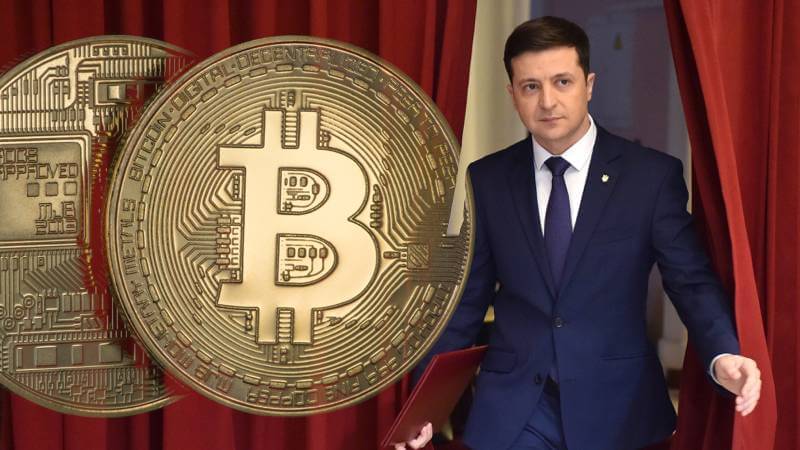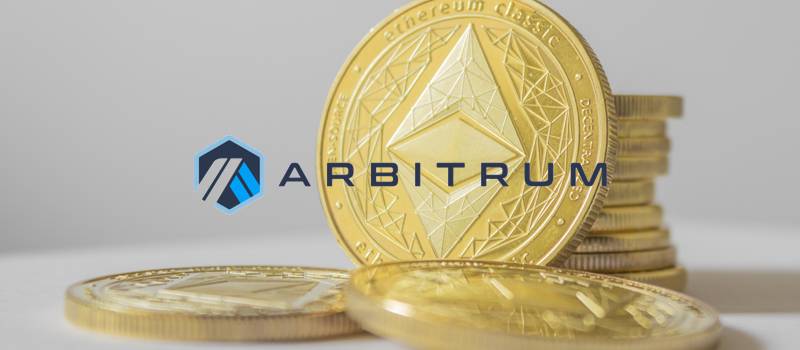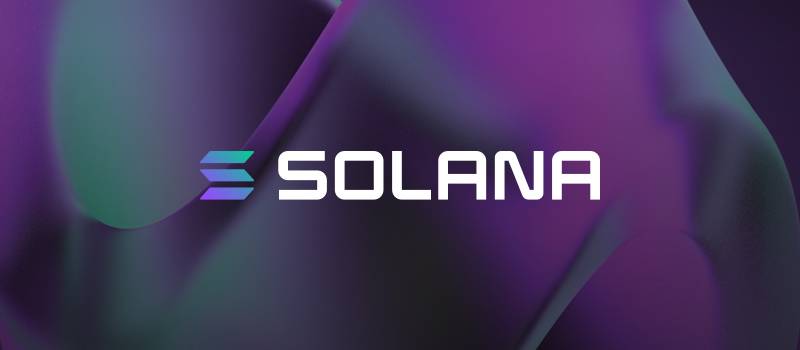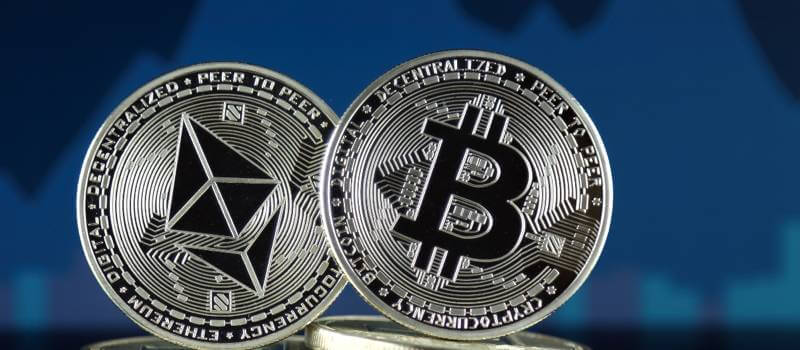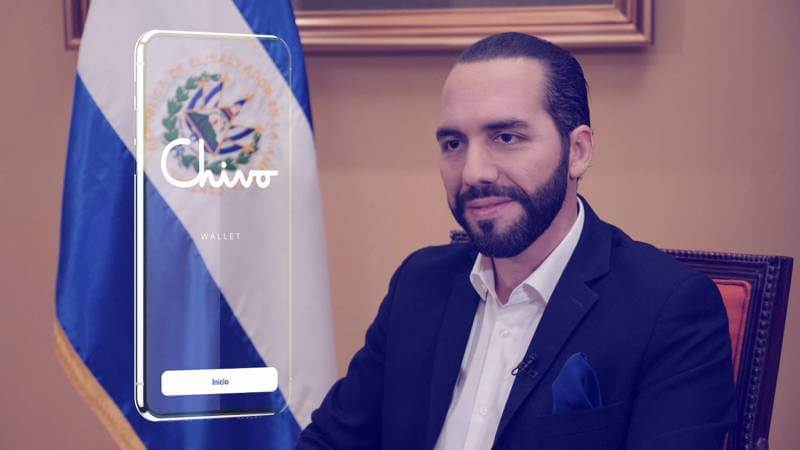September 2021 In Review
The beginning of September saw Whales rushing in to purchase BTC even as the markets dipped – and then shock waves came as a confirmed gold investor began purchasing crypto’s largest coin. Vitalik Buterin had ideas about how to better integrate Doge by making its platform similar to that of ETH, and the President of Belarus told his citizens that it was a fine day to begin mining crypto for themselves. Outside the United States, El Salvador created history by purchasing 400 BTC to give to its citizens, and even though there was a bit of trepidation on the part of some citizens, the making of BTC legal tender in the country seems to have taken hold. European financial regulators called crypto volatile but innovative, and by the middle of the month, BTC began to flounder around its support level, while ETH held its support.
Meanwhile, in positive regulation, the Ukraine government adopted a law legalizing crypto, while Arbitrum surpassed over one and a half billion in Total Value Locked (TVL). We also learned more about how regulation here in the U.S. bordered on Draconian Law, with SEC Chair Gary Gensler suggesting crypto coins were nothing more than casino chips at a poker tournament. Is American ingenuity dead? Seems as if half the country would like that to be so, while the other half must continue battling against American FUD (Fear, Uncertainty and Doubt, usually evoked intentionally in order to put a competitor at a disadvantage). Perhaps those currently in charge would like to see all of America at a disadvantage, but why would this be so? “The greatest trick the Devil ever pulled was convincing the world he didn’t exist”— (with credit here and thanks to Charles Baudelaire). The greatest trick the Democrats ever pulled was convincing half of the country (their own constituents only) that they were not Communists (Mike – can replace “were not Communists” with “had the country’s best interests at heart” or – can cut this last sentence altogether if too strong.)
As the month drew to a close, all of these poisonous regulators, including those in Mother China, kept crypto plunging as best as they could, even though over a million and a half Salvadorans were using BTC for the first time ever. Then, even Burger King decided to hop on board the crypto wagon with digital collectables, and Pplpleasr teamed with Fortune to start a new ETH-based philanthropic fund. Forces are diverging, that’s for certain. Where will this all lead?
Stay tuned….
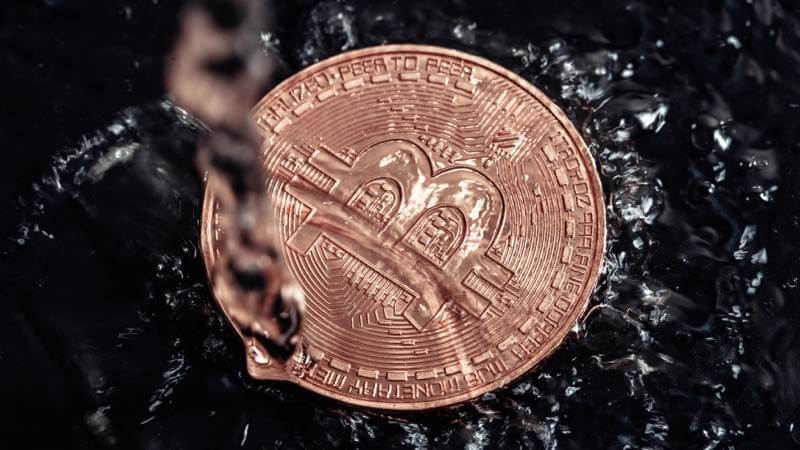
Bitcoin ‘whale’ behaviour that preceded April’s $64,000 high is back
So, just what are Bitcoin whales doing lately? These holders of huge quantities of Bitcoin (BTC) are continuing to buy the asset even as the crypto markets saw a recent dip, data from several sources shows. Most analysts believe it is just such investment behavior that precedes bull runs, hinting that another skyrocketing ascent may be in the cards for crypto over the next few months. Known as ‘whales’ in financial circles; these financial titans hold over $50 billion worth of BTC, and they increased their holdings throughout June, July, and August, as per a recent report. Data from on-chain analytics firm Chainalysis shows ‘whales’ accounted for over $10 billion worth of Bitcoin purchases from late June to late August, and some of that came from the business analytics firm MicroStrategy, which, starting last year, has accumulated billions of dollars’ worth of Bitcoin as part of its treasury assets. The report found that the last time such large-scale accumulation of BTC occurred, had been during the run-up to Bitcoin’s all-time high of $64,000, which it hit in mid-April 2021. At that time, the asset reached a market cap of over $1 trillion, before crashing to as low as $28,000 in the months afterward. Bitcoin has since recovered, and it had even crossed back over the support/resistance level of $50,000 early last week. This came just before falling by $3,000 in the middle of last week. Market analysts are unfazed regardless of the moves.
Alexandra Clark, a sales trader at UK digital asset broker GlobalBlock, stated, “Support is nearby according to technical charts.” She then added: “Bitcoin’s simple and exponential moving averages give strong buy signals… Not only that but MicroStrategy continues to grow its Bitcoin portfolio – this support could stabilize the pullback and maintain the breakout move above $45,000.” Daniela Hathorn, a market analyst at foreign exchange firm DailyFX, shared her sentiment: “The positive trend isn’t in any trouble as long as Bitcoin stays above its 200-day moving average at $45,750.” She added that a ‘key challenge’ for buyers was to make it through the $55,000 price level. Meanwhile, while the sentiment remains bullish, Bitcoin certainly can test your resilience as it can sometimes put-up notable drops of two or three thousand dollars during the middle of the night. This shows why the asset remains one of the most volatile financial instruments and it tests many new investors.
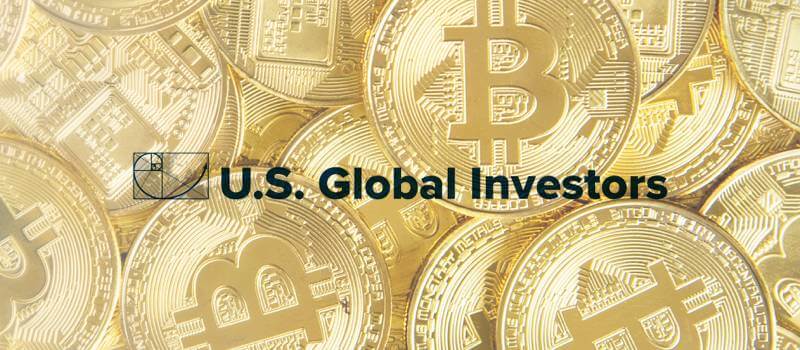
US: A historic gold investor is now buying Bitcoin (BTC)
According to a filing to the US Securities and Exchange Commission (SEC) published on August 30th, Texas-based investment management firm US Global Investors purchased significant exposure to Bitcoin by investing in Grayscale funds. The company added over $566,000 worth of Grayscale Bitcoin Trust shares (GBTC) to three out of eight of its mutual funds. The SEC filings show that the company invested $302,899 GBTC in its Gold and Precious Metals Fund, $222,532 in its World Precious Minerals Fund, and $40,958 in its Global Resources Fund. Its total BTC exposure now represents 0.19% of the net assets in the Gold and Precious Metals Fund and the World Precious Minerals Fund, and interestingly, the company has classified its position in GBTC as common equity, according to the filing. This move has come as a surprise to many in the crypto industry, as US Global Investors has typically invested in gold, minerals, precious metals, petroleum, and other natural resources. Notably, Frank Holmes, the CEO and chief investment officer of US Global Investors, serves also as the executive chairman of HIVE Blockchain Technologies. HIVE is a publicly listed cryptocurrency mining company based in Vancouver, Canada.
Both US Global Investors and Holmes personally made a strategic investment in HIVE far back in 2017, after which Holmes was appointed interim CEO. Of course, Peter Schiff, the CEO of Euro Pacific Capital and a known Bitcoin critic, was among the few who didn’t see the company’s move as extremely bullish for the industry. He noted that Holmes’s position isn’t indicative of a greater shift in the way equity managers view cryptocurrencies or Bitcoin. Just more FUD? US Global Investors is not the first major equity manager to gain exposure to Bitcoin through Grayscale. American multinational investment bank Morgan Stanley has been investing in the Grayscale Bitcoin Trust (GBTC) and holds over $36 million worth of GBTC shares. With just over 928,000 shares held, Morgan’s Insight Fund has exposure to 870 BTC. In August, CryptoSlate reported that a division of Chicago’s First Midwest Bank increased its exposure to Bitcoin based on a July filing with the SEC showing that the bank reported holding 29,498 GBTC shares as of June 30th.
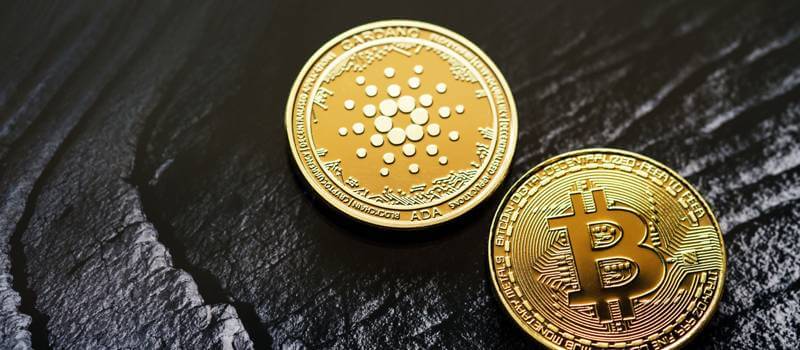
Last week saw highest Cardano (ADA) inflows, while Bitcoin outflows continue
Hold onto your hats!!! According to the latest report from CoinShares, which analyzes weekly flows into digital asset funds, the rebound seen in digital asset fund inflows spells good news for the industry, as it indicates the market might be entering a bullish period. The report found that digital asset investment products enjoyed a second consecutive week of inflows, totaling $24 million. However, this improvement was not driven by Bitcoin. CoinShares particularly noted that the recovery has been predominantly due to improved sentiment in altcoins, even though Bitcoin still holds the largest part of the market. In fact, Bitcoin saw outflows for 14 out of the past 16 weeks, and $650 million worth of the cryptocurrency has been taken out of digital asset funds. Before you run to check your account, it is notable that despite eight consecutive weeks of outflows, total outflows during this period still remain quite small relative to the total assets under management (AuM) ($38 billion) and year-to-date inflows of $4.1 billion.
On the other hand, by looking at Ethereum digital asset funds, there is a much more bullish sentiment. ETH saw outflows only 7 out of the last 16 weeks, and its 25% market share has remained stable for the better part of the year. The first week of September’s best performer, just when you might not have noticed, was Cardano, which saw inflows of over $10 million. This is the largest inflow of capital Cardano funds has ever seen, and it has brought its market share to 0.15%. Close competitors Solana and Polkadot both saw inflows this past week, with $2.7 million flowing into Solana and $1.5 million going into Polkadot. The fresh capital enabled Solana to overtake Bitcoin Cash’s AuM, which now totals $15.7 million. CoinShares noted that the significant rise in inflows means that altcoins now represent 32% of the total digital asset AuM, and this surpasses the highs the market witnessed in January 2018. Back then, altcoins represented 30% of the digital asset AuM and had been getting very close to the 35% record set in mid-May this year.

Vitalik Buterin proposes greater integration of Dogecoin (DOGE) and Ethereum
How can Dogecoin evolve? With DOGE struggling to recapture its previous form from earlier on in the year, if Ethereum co-founder Vitalik Buterin had his way, Dogecoin could be ready for an overhaul that would see a major step forward in its evolution. It is likely that his proposal could go some way to reigniting interest in the controversial meme token. As a “Twitter experiment,” Buterin posted a tweet requesting people he follows ask him anything – either crypto, or non-crypto related questions. The CEO of Three Arrows Capital, Su Zhu, responded by quizzing Buterin on his Dogecoin/Ethereum integration ideas. The response? Not surprisingly, similar to what Ethereum is trying to accomplish with ETH 2.0, Buterin suggested Dogecoin change its consensus mechanism from Proof-of-Work (PoW) to Proof-of-Stake (PoS). He added that, by using Ethereum code, developers wouldn’t need to start from scratch in order to accomplish this feat. “Personally, I hope that Doge can switch to PoS soon, perhaps using Ethereum code,” Buterin tweeted. PoS vs. PoW is a hotly contested topic, and advocates for each side maintain that their way shows superiority. Simply put, PoS offers more scalability and throughput, and yet since PoW networks are fully decentralized and have high hash rates, meaning they are strongly miner supported, the PoW network is said to be more secure.
However, environmental concerns seems to be the decisive factor in current times, and this sentiment favors PoS over PoW networks. Critics of PoW believe that its high electrical consumption, along with its use of polluting power sources, make it unsustainable in the long term. Dogecoin detractors point out the protocol’s inflationary supply, questioning how a token with infinite supply can hope to have any value. DOGE was initially launched with a 100 billion fixed token supply. However, in order to promote its use as a tipping mechanism while also discouraging hodling, the Dogecoin developers removed this limit and, currently, $5 billion of DOGE are added to the supply each year. Buterin mentioned that he is in favor of keeping the inflationary issuance. Rather than entering into the token supply, however, he suggests channeling the funds into a decentralized autonomous organization (DAO) that “funds global public goods.” This, Buterin said, is in keeping with Dogecoin’s “wholesome ethos.”
He then went on to add, “I also hope they don’t cancel the 5b/year annual PoW issuance, instead they put it in some kind of DAO that funds global public goods. Would fit well with dogecoin’s non-greedy wholesome ethos.” Interestingly, as Dogecoin was spiking higher earlier in the year, its co-founder Billy Markus resurfaced to post an open letter on Reddit explaining why he disappeared and what he wants for DOGE going forward. In his open letter, Markus wrote that it’s his hope that Dogecoin can be a force for good.

Over half a billion dollars worth of Ethereum (ETH) are now burned
Data from multiple sources show that after last month’s Ethereum Improvement Proposal (EIP)-1559, half a billion dollars’ worth of Ethereum (ETH) have now been ‘burned.’ The EIP-1559 is an upgrade designed to improve pricing mechanisms by including a fixed-per-block network fee that is burned. ETH, the world’s second-largest cryptocurrency after Bitcoin by market cap, went live last month and has performed as expected so far. As per data from onchain tracker Etherchain, over 177076.1 ETH has been burned in under four weeks since EIP-1559 went live. This amounts to over $675 million at current prices, but still accounts for less than 1% of Ethereum’s 117 million circulating supply. Between five to seven ETH are burned every minute ($21,000 to $27,000), with a block utilization of 50.9%. A snapshot of past blocks shows an average of 1 ETH is burned each block. Miners, on the other hand, earn over 2 ETH ($7,800) on average for each block they mine. How does EIP-1559 help? For one, it makes fees more predictable for users. After the upgrade yesterday, a ‘base transaction fee’ is now charged to users, and it is algorithmically determined by how busy the network is. Users then ‘tip’ miners to have their own transactions processed quicker.
The miners themselves will only receive the tips, and then the ‘base fee’ amount will be ‘burned’ out of supply forever. In terms of the market effect, this means there’s now fewer ETH available on the market daily, which should, in turn, make the asset even more valuable to holders and investors. And the market seems to enjoy hearing this narrative: Ethereum has risen over 50% in the past month and 21% in the past week alone, running to a $445 billion market cap as of late last week. Some crypto traders are betting on a price target as high as $10,000 per ETH this year—providing it with a market cap of over a trillion dollars if that were to happen.
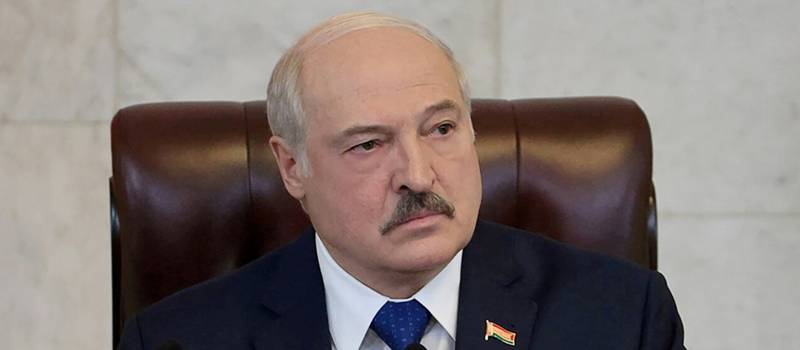
Belarus president calls on citizens to mine crypto
Alexander Lukashenko, the President of Belarus, has urged citizens to mine cryptocurrencies instead of moving abroad to pursue low-paying farming jobs. Speaking at the opening of the Petrikovsky Mining and Processing Plant on August 27th, Lukashenko said that the country had ample energy resources just waiting to be put to good use. He referred to the country’s numerous abandoned industrial sites, and these included both electric and nuclear power plants. According to a report from the Russian media site RBC, Lukashenko addressed the rising number of people who are moving abroad in order to look for seasonal jobs, saying that nobody was waiting for Belarusians with open arms. He went on to explain that if a country was willing to accept the huge influx of migrants, it would only be for low-paying farming jobs in other Eastern European countries such as Poland. He added that there were a lot of financial opportunities for people in Petrikovsky, as the region was rich with cheap energy resources. “Start mining cryptocurrencies, or whatever they’re called,” Lukashenko said last week. “There is enough electricity in the country.”
Cryptocurrencies have been fully legalized in Belarus for almost four years, ever since the country adopted the Decree of Digital Economy in December 2017. This decree exempted the crypto industry from taxes and allowed its citizens to freely own and transact in all types of digital assets. Belarus has been at the forefront of crypto adoption in Europe. In April 2019, Lukashenko proposed using excess energy from the country’s first nuclear power plant to mine cryptocurrencies. The same year, Belarusbank, the largest bank in the country, said that it was considering setting up a cryptocurrency exchange as part of its digitalization effort. Earlier this year, the country’s Ministry of Energy announced that it was actively exploring starting a state-run cryptocurrency mining project. The massive pro-crypto movement in Belarus can be linked to the complicated political situation which has plagued the country for the past decade. Lukashenko came into power as president in 1994, and he has been re-elected six times since then. In the past, he had faced heavy criticism and sanctions from the West due to his poor monetary policy, the lack of democratic freedom in the country, and mounting foreign debt. Faced with an economic crisis and shrinking freedoms, Belarusians have been migrating en masse to Western Europe, pushing its government to adopt a pro-crypto attitude they believe will keep people in the country.
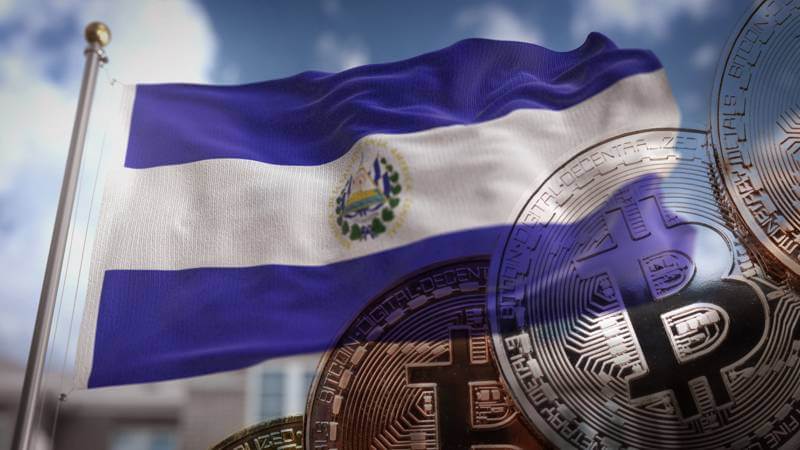
7 out of 10 Salvadorans want to repeal the new Bitcoin (BTC) law
Seven out of every ten Salvadoran citizens want their political representatives to repeal the newly instated Bitcoin law because they do not believe Bitcoin will solve the country’s financial problems. This is a finding of the latest survey from the University Institute of Public Opinion, which presented the results of its massive, state-wide survey on September 2nd. The global crypto community has widely celebrated El Salvador’s newly introduced law, and yet it lacks support among the people it actually applies to. The law declares Bitcoin legal tender in the country and many industry proponents believe President Nayib Bukele’s law will create a precedent that will push other countries to adopt cryptocurrencies as legal means of payment. The Institute of Public Opinion is a non-profit organization from the José Simeón Cañas Central American University. It published the results of its state-wide survey early last week.
Analyzing some of the worst struggles which Salvadorans feel, the survey revealed that 45% of the people believed the two biggest problems in El Salvador are poverty and unemployment. More telling, it found that 67.7% of respondents said that they didn’t believe their situation would be improved by raising the minimum wage. Salvadorans gave President Nayib Bukele a 7.64 rating, the lowest ever recorded for the 40-year-old since he was elected in 2019. This lack of support for Bukele is thought to have incurred the public’s disapproval for the upcoming Bitcoin law, as well. It goes further than that, and according to the survey, fully seven out of every ten citizens believe that the Bitcoin law should be repelled. Interestingly, only 20% of the people stated that they didn’t trust Bitcoin. Andreu Oliva, the University’s rector, stated that he believed the survey revealed that the population was quite misinformed about Bitcoin and the upcoming law. He believes it is just this misinformation that fueled the recent protests in the country’s capital. He concluded, however, that the country’s massive efforts to bring Bitcoin closer to the masses has great potential to counter the rising anti-crypto sentiment.

IOHK shuts down Cardano FUD after ‘1 transaction per block’ criticism
Just when Cardano smart contracts are readying for rollout, deep into the testnet phase, a “quirk” emerged in its eUTxO model which may lead to issues of concurrency. Just what does this mean? eUTxO stands for extended unspent transaction output, and these are the systems which comprise the asset, smart contract, and additional on-chain data relevant to the smart contract. When eUTxOs are created, they have the option to have smart contracts attached to them, and so this model is based entirely on individual transactions grouped in blocks. What this means is that every time you wish to update data held by a dApp (inside of a UTXO), you must spend the original UTXO (thereby destroying it) and create a new UTXO at the same address & holding the same assets. This operates differently from the accounting (or balance) model used by Ethereum, where assets are represented as balances within accounts that are quite similar to bank accounts. In the computing industry, concurrency refers to the ability of a smart contract to handle requests from multiple different agents at the same time.
A recent article by OccamFi points out that some Plutus developers are concerned that the eUTXO system employed by Cardano will enable only one agent to interact with the SC at a time. This would then create a concurrency bottleneck. “Where developers are currently running into a problem is with only one agent being allowed to consume the UTXO and thus the SC at a time, creating this so-called “Concurrency” issue.” This becomes problematic as in the case of operating a decentralized exchange (DEX), where multiple users require access to a contract address at the same time. Cardano responded to what could just be the latest FUD to come its way. Developers Input Output Hong Kong (IOHK) dismissed this concern as a non-issue, and explaining the situation, they posted a tweet thread which defended their eUTxO model. In that thread, they said, “The specific flavor #Cardano uses is the eUTxO – or extended model which we believe offers greater security, allows for fee predictability (no nasty surprises…) and offers more powerful parallelization.” Specifically, they say their eUTxO system is not bottlenecked if developers employ multiple UTXOs, which they say works to “enforce” parallelism. “And to be clear, dapps are NOT limited to 1 transaction per block. By designing your service or application with multiple UTxOs, you can enforce more parallelism. This is inherent and – we believe – one of the advantages to eUTxO design as we have implemented it in #Plutus.” Up-and-coming Cardano DEX SundaeSwap set the record straight by saying the concurrency problem only affects protocols that allow multiple people access to the same UTxO. But Cardano is capable of running multiple UTxOs, which nullifies the issue.

El Salvador creates history after buying 400 Bitcoin (BTC)
El Salvador’s President Nayib Bukele revealed that the Central American country successfully purchased 200 units of Bitcoin in a tweet the second Monday of September. With that purchase, El Salvador became the first government in the world to invest in the crypto space. The president hinted that this would be the first of many purchases since the country’s “brokers will be buying a lot more as the deadline approaches.” In fact, later in the day, Bukele revealed that the country went ahead and bought more Bitcoin, taking its total holdings to 400 units of BTC. El Salvador is expected to officially legalize the use of Bitcoin on September 7th, after it became the first country to recognize the coin as a legal tender earlier in the year. Throughout the year, President Bukele has constantly reiterated his belief that the asset would make remittance to the country easier, faster, and cheaper. At the same time, he expounded the opinion that the Bitcoin Law, which recognizes the cryptocurrency as legal tender, will do a lot of good for the country’s economy and society.
The Central American country has faced some level of backlash from the World Bank and International Monetary Fund who say that adopting BTC could have an overall negative impact. While many crypto enthusiasts have welcomed the decision as a sign of what the future holds for the industry, El Salvador itself has faced hostile reactions. Recently, the country has witnessed some level of opposition from locals who highlighted the issue of volatility attached to the asset and worried over its use by criminals. There are indications that the country could have made the purchase itself by utilizing the $150 million fund it had set aside for the adoption of BTC as a legal tender. Some believe the purchase at the start of last week could be geared towards the government’s plan of giving each citizen of the country $30 worth of the asset. In reaction to the news, the value of BTC briefly climbed to as high as $52,853.
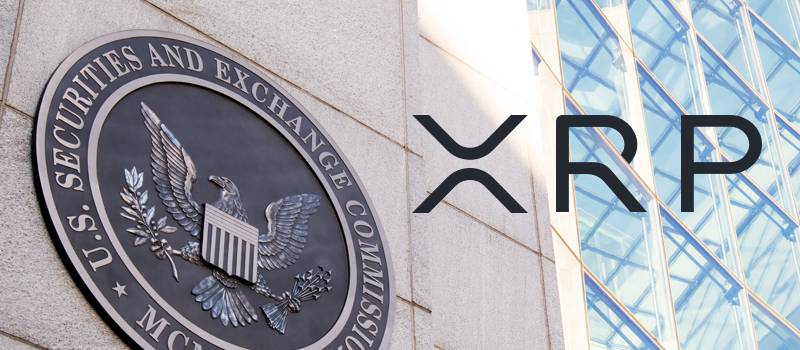
SEC refuses Ripple’s request to disclose employees’ XRP, BTC holdings
The U.S. Securities and Exchange Commission (SEC) has refused to provide any documentation regarding the XRP holdings of its employees. Similarly, it will not disclose any of its own documentation regarding “trading preclearance decisions” for XRP, BTC, and ETH. Ripple requested the information as part of its ongoing trial with the SEC and hoped to obtain the records in order to determine policies around trading “governing digital assets.” Pascale Guerrier, the Trial Attorney at the SEC’s Division of Enforcement, said that Ripple’s requests “falls well below the low bar of relevance” in the Commission’s case against the company. Oh, really? He then called the motion “an unjustified intrusion” into the private financial affairs of SEC employees. Ripple filed the original motion on August 27th in order to understand SEC’s trading policies when it came to digital assets and whether the regulator allowed its employees to trade XRP. The company was hoping to use the information as part of its defense by claiming that if SEC and its employees behaved in a way that suggests XRP wasn’t a security, there was no way for Ripple to know whether it should classify the token as one.
Ripple held three separate meetings with the SEC during the summer to discuss this very issue, but had no success in any of them, according to the latest motion. Each time, the Commission refused to provide any details about its employees’ XRP holdings, even with redactions of personal information or in aggregate form. In June, the court granted Ripple’s motion to compel the SEC to produce this very documentation, but the Commission only provided a policy from January 2018, called the “Ethics Guidance Regarding Digital Assets,” which showed that the SEC hadn’t restricted its staff from trading cryptocurrencies until January 2018. Ripple believes that the policy is consistent with its view that the SEC itself didn’t see digital assets as securities, and so there was no basis for its accusations that Ripple was selling unregistered securities in the form of XRP. With the SEC’s lawsuit against Ripple going as far back as 2013, the company believes it has very good grounds for dismissal. Ripple CEO Brad Garlingoise fired back at the SEC at the end of August, blasting its handling of the XRP case. “This has been clear from the start — the SEC’s lawsuit isn’t just about Ripple, it’s about what ‘impossible standards of fair notice and due process’ through regulation by enforcement can do to crypto innovation.”

Pantera Capital’s Crypto Fund Has Raised $369M Since July
Pantera has raised $369 million for its new blockchain fund, partially restocking a war chest for bets across the crypto ecosystem. The crypto investments firm had $4.7 billion in assets under management in August, new filings show. Disclosed on Friday the second week of the month, regulatory filings amassed from 107 investors, puts Pantera well short of a $600 million target projected in early May. Pantera began taking investments in July but is leaving the fund open “indefinitely,” which means it could get there eventually. According to the investor deck, the blockchain fund is meant to be Pantera’s omnibus crypto investment vehicle which it will deploy into startup equity, early stage protocol tokens, and more well-known digital assets, such as Bitcoin. Pantera held $4.7 billion in assets under management on Aug. 31, according to the deck, and its new capital comes as other venture capital (VC) titans announce major funds for crypto investments. One of the top among them is Andreessen Horowitz’s (a16z) $2.2 billion fund that was announced in June.
Pantera did not reply to requests for comment at this time, but overall, it has been a banner year for crypto investments from the VC sector. A report by CB Insights in July said a record $4 billion in venture capital had been poured into crypto startups in the second quarter of 2021 alone.
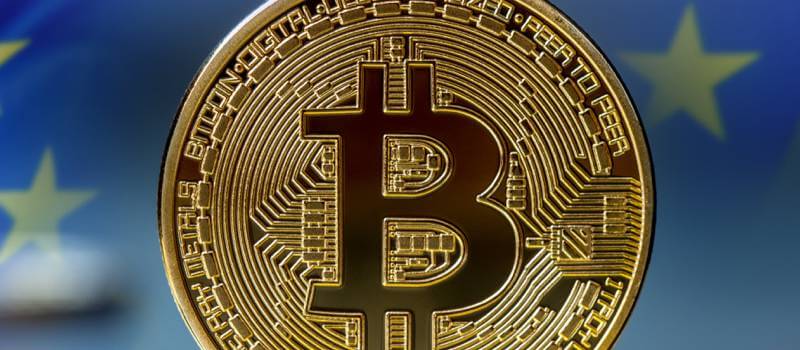
European finance regulator calls crypto ‘volatile’ but innovative
Crypto assets and distributed ledger technology (DLT) topped the European Securities and Markets Authority’s (ESMA) 2021 financial innovation scoreboard, according to a new report on financial trends and risks published by the institution. The 110-page report, entitled “Trends, Risks and Vulnerabilities,” treated cryptocurrency as a trending financial innovation, but also as a threat to sustainable finance (due to its “soaring” environmental cost, particularly in relation to crypto mining). The report suggested that crypto asset volatility, along with the rise of decentralized finance (DeFi), central bank digital currencies (CBDC) and stablecoins, are contributing to increasing risk across all asset classes. “Most crypto assets (CAs) are highly volatile in price and operate outside of the existing EU regulatory framework, which raises investor protection issues,” the report said. ESMA is an independent European Union (EU) authority whose mission is to improve investor protection while promoting stable and orderly financial markets. In their report, they used a scoreboard to prioritize financial innovations that require deeper analysis and potential policy responses, and then ranked them based on how they relate to ESMA objectives.
The ESMA report was released just as EU regulators began gearing up for the implementation of all-encompassing cryptocurrency regulations, new anti-money laundering (AML) rules and tax reporting requirements for virtual asset service providers and investors. Additionally, the European Central Bank (ECB) will soon begin a two-year investigation into a digital euro in October. The report blamed a rise in risk-taking behavior and market exuberance for increasing volatility in equity markets. The report stated that “increased [risk-taking] behavior has led to volatility in equity (e.g., GameStop-related market movements) and crypto asset markets, as well as to the materialization of event-driven risks such as in the case of Archegos or Greensill,” which was in reference to the recent falls of the New York investment giant Archegos and the London-based lender Greensill Capital. “Going forward, we expect to continue to see a prolonged period of risk to institutional and retail investors of further – possibly significant – market corrections and see very high risks across the whole of the ESMA remit,” the report further stated. It then cautioned against the risks surrounding crypto assets, adding that the crypto market capitalization fell by almost 40% in May.
Bitcoin stalls at support, resistance at $50k – Ether holds support
Upside momentum slowed into the weekend of the second week of the month, and Bitcoin (BTC) was roughly flat over the final days the week prior, settling near the $46,000 support level. Upside appeared to be limited towards the $50,000 resistance, however, the sell-off was stabilizing, leaving BTC down about 7% last week. Buyers will need to defend support above the $42,000 breakout level to resume the relief rally from July. The relative strength index (RSI) on the daily chart continues to decline from overbought levels over the past month, and the current neutral reading on the RSI is similar to June and July, which occurred during a consolidation phase. Resistance remains strong between $50,000 and $55,000, and the nearly 70% price rally from $30,000 in July appears to be exhausted.
Cryptocurrencies were mostly lower after a volatile week, and many alternative coins in the CoinDesk 20 underperformed Bitcoin over the past seven days. Some analysts expect BTC to consolidate with support nearby at the 200-day moving average. FundStrat, a global advisory firm, wrote in a newsletter published last Wednesday, that “[Last] Tuesday’s liquidations were possibly exacerbated by the leverage embedded in the Ethereum market and the wider altcoin universe. The macro and on-chain (blockchain) pictures remain consistent, and therefore we believe these mid-cycle liquidations are good opportunities to consolidate positions.” Analysts and traders are also monitoring regulatory risk, which could work to dampen sentiment in the crypto market.
Meantime, Ethereum, the world’s second-largest cryptocurrency by market capitalization, was holding support above the $3,000 breakout level that was achieved in August. ETH had declined from the $4,000 resistance level because buyers were unable to match the all-time price high around $4,360 reached in May. For now, ETH appears to be oversold on the short-term charts, and will likely consolidate further. Analysts are also monitoring price levels where future liquidations might occur. Luke Posey, researcher at Glassnode, wrote in a blog post, “We can view the updated positioning of where liquidation thresholds exist and how traders have repositioned themselves post-crash. We see that the next round of significant liquidations don’t start until the ETH $2,600 level.”
Ukraine Adopts New Law To Legalize Bitcoin And Other Cryptocurrencies
Ukraine became the latest to join the growing list of countries that have legalized crypto. Seems as times go by, more governments are acknowledging the staying power of cryptocurrencies such as Bitcoin. El Salvador was the first country to adopt Bitcoin as legal tender earlier in the month. Three weeks ago, Cuba passed a law to recognize and regulate cryptocurrencies, citing “reasons of socio-economic interest,” and now Panama is drafting new cryptocurrency regulations. In the Ukraine earlier last month, there were reports of a new cryptocurrency-related bill that would allow payments in cryptocurrencies. As of then, the bill was being prepared in the parliament for the second reading, according to a local report. Well, in a nearly unanimous vote, the Parliament in Ukraine passed a law to legalize cryptocurrency on Wednesday of last week, wherein the Ukrainian Parliament adopted the draft law “On Virtual Assets.” Legally recognizing cryptocurrency in the country for the first time, the law will enter into force after lawmakers approve amendments to the country’s tax code about the taxation of cryptocurrency transactions. This news comes after Ukrainian President Volodymyr Zelensky signed the law On Payment Services, another digital currency-related law. That law officially allowed Ukraine’s central bank to issue a central bank digital currency, in this case, the digital hryvnia.
However, unlike El Salvador’s move to adopt bitcoin as legal tender, Ukraine’s crypto law clearly states that cryptocurrencies do not constitute legal tender. The new law recognizes virtual assets as both secured and unsecured intangible goods. However, cryptocurrencies are not accepted as a legal means of payment, and their exchange for other goods or services will not be allowed. “Ukrainians will also be able to declare their income in virtual assets,” said Anastasia Bratko, of the Ministry of Digital Transformation. She then added that the law “guarantees judicial protection of the rights to virtual asset owners.” The new law requires that the term ‘Financial virtual assets’ be issued by registered entities. Crypto market participants will be able to independently determine the value of virtual assets, open bank accounts in order to settle transactions, and seek judicial protection for associated rights. Service providers will be required to abide by the country’s anti-money laundering regulations, including preventing any attempts to finance terrorism through use of their platforms – similar to traditional financial institutions. Two years ago, Ukraine’s Ministry of Digital Transformation was established, and at once became very active in the crypto field. It partnered with Binance to jointly work on new crypto rules. Meantime, the Government’s online portal reported that the Ministry of Digital Transformation was partnering with the crypto exchange Currency.com. This is a Belarusian service that is reportedly the first regulated exchange in the Commonwealth of Independent States (CIS) region to provide support for cryptocurrencies, fiat, and tokenized assets.
Arbitrum Surpasses $1.5 Billion in TVL Following Rumors of a Possible Token Airdrop
Also by the end of the second week of September, Arbitrum (which is an L2 scaling solution for Ethereum) had reached a new milestone, breaking the $1.5 billion in Total Value Locked (TVL) in less than two weeks since it launched in main net. It had a big influx of liquidity early last week, with more than $1 billion entering the network, according to info from L2Beat. Protocols in Ethereum are still adapting their structures to include Arbitrum services, but the layer has experienced sizable support, even though some Ethereum protocols like Compound and Aave still have not yet adopted it. Arbitrum is a second layer expansion rollup for Ethereum, and the smart contract recorded an influx of more than 1 billion early last week after a rumor started in social media that the protocol might be planning to issue its own token in the coming days. The second layer was launched on main net less than two weeks ago. Most users are heading to the first farming platform in Arbitrum, called Arbinyan, which, of course, is related to the nyan cat meme. Arbinyan alone has 1.48 Billion TVL, which means that almost all of the funds in Arbitrum will be getting the astounding yields the farm is offering, which at this time is about 3,314.70% APY in the Nyan pool.
There might be another reason why these funds have moved to the Arbitrum layer – a rumor about the possible issuance of a native token as an airdrop spread early last week on social platforms like Twitter. Cryptocurrency influencer Cobie made some inquiries and then declared, “Eth l2s (Optimism/Arbitrum) almost definitely gonna do a dydx/uniswap style retrospective token drop right?” However, apart from the rumor, Offchain Labs itself has not declared anything regarding the possible issuance of a native token. In fact, Arbitrum had to clarify the subject in its official Twitter account, where it stated: “Reminder: there is no Arbitrum token. Anything claiming to be an official Arbitrum token is a scam.” Ethereum users are frequently aware of protocols that lack a native token, waiting for a possible airdrop to happen, and last week, Dydx, a decentralized derivatives exchange, released the airdropped native token for its users, giving $50K to some of its heavy players.
Bitcoin And El Salvador Roundup: How BTC Became Legal Tender, A New BTC Wallet, BitGo, And More
El Salvador saw one of the most important moments in its history when the country passed a law which made Bitcoin legal tender. This was also quite important for Bitcoin, as well. El Salvador became the first government to adopt Bitcoin, and they did so with help from Bitgo, which is behind the technology that is powering the entire effort. El Salvador will be using the official Chivo digital wallet, which will be provided by Bitgo, a crypto custody firm based out of California. Bitgo will provide the Chivo security platform and the application programming interface. The South American country had outlined its intentions about adopting BTC in June, when president Nayib Bukele announced the decision on his official Twitter handle. The bill for the Bitcoin law passed after 62 out of 84 Congressmen voted in favor. El Salvador will also be looking at exploring renewable energy use for Bitcoin mining. Mike Belshe, CEO and Co-Founder of BitGo, commented on El Salvador’s decision, stating, “Digital assets look so different from what we’ve seen with other types of money, and so people wonder about how [they] fit in, but this is an opportunity to build financial freedom for the people of El Salvador.”
Many now believe that the Chivo wallet could cost MoneyGram and Western Union about $400 Million in commission made due to remittances. With remittances making up over 23% of El Salvador’s GDP, until now, money service providers such as MoneyGram and Western Union were the preferred method of transferring the remittances. However, the Chivo wallet could change all that. Whistleblower and privacy activist Edward Snowden weighed in on the possible implications of El Salvador’s Bitcoin law. He believes the implementation of Bitcoin as legal tender will put pressure on competing nations to follow suit. Eventually, he feels, they will be forced to acquire Bitcoin and Bitcoin’s technical design will incentivize an early adoption.
Over $2.5 Billion USDC Now Circulates on Solana
Jeremy Allaire, co-founder and CEO at Circle, the company behind the dollar-pegged stablecoin Solana, commented that the “USDC on Solana jumped from 1B to 2B in circulation” in just a week. Data from the Solana explorer reveals that the current supply of USDC on the network is just a bit less than $2.5 billion. Solana’s network saw explosive growth this year, and it appears that it’s not just NFTs that are driving it higher – the total amount of USDC that circulates on Solana is now up to $2.5 billion. Allaire also revealed that the effort to put USDC on Solana came as part of their goal to introduce “multichain USDC, forming partnerships with a number of important chains.” They saw Solana as one of the first to reach out primarily because of “the scale, speed, and cost-efficiency the chain could bring to USDC.” In any event, these developments on Solana, including the growing number of USDC in circulation on it, have had a high impact on the price of its native token – SOL. SOL is up over 500% through the past 12 months, and its price recently charted a new all-time high above $200.
Bitcoin continues to chop around $48k as Ether’s exchange outflows spike
Bitcoin seemingly lacks clear direction bias and yet centralized exchanges are seeing record Ether outflow. Bitcoin is in inertia, as lingering macroeconomic risks keep any gains in check. Ether, the native token of Ethereum’s blockchain, is for now seeing little activity in the wake of what many say are bullish record daily outflows from exchanges. Bitcoin, the largest cryptocurrency by market value, was trading around $48,000 at the end of last week. Its upside momentum ran out of steam when the United States posted unexpectedly strong August retail sales numbers last Thursday, reviving concerns of an early scaling back of the Federal Reserve stimulus. Following a weaker-than-estimated U.S. core inflation number, much of the speculation about a so-called taper had subsided. Analysts at Standard Chartered expect the Fed to announce the taper this week after the Federal Open Market Committee (FOMC) meets. According to efxnews.com, the fed bank’s analysts noted, “The 22nd September FOMC will likely signal a tapering decision at the next meeting, providing few details. The [interest rate] dots will likely signal one 2022 hike, and two added hikes in both 2023 and 2024. The risk skew is for more rather than less hikes; the added hawkish lean in not fully priced, in our view.” Market activity in bitcoin futures and options suggests investors are cautiously bullish, however, some observers are worried that Chinese property giant Evergrande’s debt problems may shake financial markets, including cryptocurrencies.
As Glassnode founders Jan Happel and Jann Allemann pointed out, the bullish bias is evident from the mildly positive funding rates, or the cost of holding long positions, in the perpetual futures market. The cautious stance is gleaned from positive one-week and one-month put-call skews, which measure the cost of puts – or bearish bets – relative to calls, which are bullish bets. The positive values imply that traders are seeking short-term downside protection. Meantime, we are witnessing record Ether exchange outflows – according to the data analytics firm IntoTheBlock, centralized exchanges registered an outflow of more than 360,000 ETH, worth $1.2 billion in the middle of last week. That was the largest single-day net outflow in dollar terms on record. Exchange outflows are typically considered bullish because they represent a decline in the number of coins available for sale in the market. Ether rallied by 60% within thirty days after centralized exchanges registered a single-day outflow of $1 billion on April 16. The crypto community is cheering the latest outflow; however, drawing definite conclusions based upon blockchain metrics is risky because not every outflow represents a withdrawal by investors. It could be an exchange’s internal transfer. Ether’s exchange balance has been falling for over a year now and had reached a 2 1/2-year low of 15 million at the end of August. Meanwhile data source Glassnode shows the amount held in the ETH2 deposit contract continues to rise, and it is currently over 7 million.
After Targeting BlockFi, State Regulators Now Set Their Eyes On Celsius
The crypto lending platform BlockFi started facing heat earlier this year from state regulators in New Jersey, Texas, and Alabama, and other states have joined the witch hunt since then. Celsius began facing similar cease and desist demands from all three of the same states. What could this potentially mean for DeFi moving forward? It’s quickly becoming quite apparent that Celsius is joining the fight along with BlockFi. Whereas last Friday, Texas officials filed a cease-and-desist order against Celsius, such filing will require Celsius to show the state why it shouldn’t be ordered to stop offering its products to state residents. It will have to defend against accusations that it is offering residents unregistered securities. The Texas hearing is scheduled for February 24. Meantime, both Alabama and New Jersey issued similar actions on the same day. New Jersey ordered the platform to stop offering select products by November 1, and in a similar action, Alabama demanded that the platform show why it shouldn’t be halted from offering products within 28 days. A Celsius representative told Bloomberg that the firm is “disappointed these actions have been filed and wholeheartedly disagree with the allegations being made that Celsius has not complied with the law,” adding that the platform would not be making any immediate changes in services for clients.
The news comes just a couple of short weeks after Coinbase released a blog post regarding an impending lawsuit from the SEC. This suit assumes that Coinbase will be moving forward with its anticipated Lend product, and in response to that, it has since applied for a National Futures Association license. It remains to be seen what might happen between the Lend product and SEC. Meantime, Celsius has quietly become a behemoth in DeFi, and the platform reportedly holds over $24B in “community assets,” making it one of the biggest crypto lenders and interest-account providers. What this means for Celsius customers in the three states taking legal action remains to be seen. Crypt enthusiasts believe that BlockFi could end up being a case study; however, what has happened so far between BlockFi and regulators thus far has not been enough to establish a precedent. The optimists hope that these actions lead to regulation that establishes good practice and a framework for crypto lending platforms. However, the pessimistic perspective says that more states could join the ranks, and that DeFi could face increased pressure from regulators, especially given the impact it can have on traditional banking institutions. Throughout a handful of states, thus far only new account registration has been restricted, and customers on BlockFi prior to the regulatory action have seen no impact. Either way, it seems hard to suggest that these individual state regulators have consumer protection at the forefront.
1.6 Million Salvadorans Now Using Bitcoin Chivo Wallet
In the final week of September, the president of El Salvador, Nayib Bukele, tweeted that the adoption of the nation’s recently launched Bitcoin app, Chivo Wallet, has come to over 1.6 million Salvadorans, who now are using the app and have access to BTC. This is quite a feat considering Bitcoin only became legal tender in the country on September 7, 2021. Prior to adopting a Bitcoin standard, seventy percent of the population in El Salvador was unbanked — but now Bitcoin is banking the unbanked and those who have installed the app now have access to a savings account via Bitcoin. Since the population of the small country is about six and a half million, this means that almost twenty-five percent of the population in El Salvador now has savings. Despite the FUD which the mainstream media has thrown at both Bitcoin and El Salvador this past month, the country is poised to take advantage of all the benefits of operating on a Bitcoin standard. President Bukele has stood his ground against the IMF and the World Bank in his decision to make Bitcoin legal tender, and in doing so, El Salvador is setting a great example for other countries to follow in adopting Bitcoin. Surely, its citizens are going to benefit both in the short and long term.
Coinbase cancels lending product due to SEC threat
It seems that, unfortunately, Coinbase has wilted under SEC pressure. The Brian Armstrong-led crypto exchange, Coinbase, has now abandoned its proposed plans to launch a crypto lending product, since the United Securities and Exchange Commission (SEC) has argued it would be a violation of its securities law. Early last week, Coinbase announced in an updated blog post that it would no longer launch the USDC APY program, and it has discontinued the waitlist. The post read: “As we continue our work to seek regulatory clarity for the crypto industry as a whole, we’ve made the difficult decision not to launch the USDC APY program.” It went on to read, “We have also discontinued the waitlist for this program as we turn our work to what comes next. We had hundreds of thousands of customers from across the country sign up and we want to thank you all for your interest. We will not stop looking for ways to bring innovative, trusted programs and products to our customers.”
Back in June, Coinbase had proposed the Lend product which would have seen its users earn up to four percent interest on selected crypto assets. However, the exchange then revealed that it had received threats of a lawsuit from financial regulators if it continued with its plan. Armstrong had earlier highlighted how the Gary Gensler-led commission had acted quite “shady” and had refused to provide responses to why it considered the product to be a security. According to Armstrong, “They refuse to tell us why they think it’s a security, and instead subpoena a bunch of records from us (we comply), demand testimony from our employees (we comply), and then tell us they will be suing us if we proceed to launch, with zero explanation as to why.” As of early last week, the SEC had yet to release an official statement defending itself against the allegations levied by Coinbase.
SEC chair Gary Gensler says stablecoins are like ‘casino chips’
On Tuesday of the last week of the month, in his latest remarks about cryptocurrencies, the United States Securities and Exchange Commission chairman, Gary Gensler, went ahead and compared Stablecoins to instruments used for gambling purposes at casinos. Interviewed by David Ignatius, a columnist with Washington Post, Gensler said several cryptocurrency projects fall under securities that SEC oversees, while the rest are better suited for enforcement by the Commodity Futures Trading Commission. He described the authority of both agencies as robust, but noted that their coverage was inadequate, especially for Stablecoins, which could have the traits of investment contracts. Gensler actually said, “Stablecoins are almost acting like poker chips at the casino right now. We’ve got a lot of casinos here in the Wild West, and the poker chip is these Stablecoins at the casino gaming tables.”
Perhaps wanting more power than ever before, according to Gensler, both the SEC and the CFTC would benefit from the U.S. Congress in terms of regulation and enforcement for Stablecoins. He noted that current laws are seemingly too broad to handle a modern financial instrument like crypto. “I do really fear that we’ll keep bringing these enforcement cases, but there’s going to be a problem. There’s going to be a problem on lending platforms, on trading platforms. Frankly, when that happens, I think a lot of people are going to get hurt.” Gensler had hoped to introduce crypto-related policy changes that would cover token offerings, decentralized finance, Stablecoins, custody, exchange-traded funds, and lending platforms back in August.
Burger King Launches ‘Keep It Real Meals’ NFT Campaign With Digital Collectibles Market Sweet
The fast-food restaurant chain Burger King announced that they have launched a non-fungible token (NFT) campaign called the “Keep It Real Meals” initiative. The NFT marketplace Sweet revealed a partnership with the burger giant, and the new campaign is quite different from other NFT concepts. This initiative will showcase QR codes tethered to close to six million meal boxes and scanning the QR codes will unlock a digital collectible. Burger King’s announcement stated, “collecting them can lead to unlocking bonus NFTs.” The campaign will feature three celebrities including the Brazilian singer Anitta, American social media personality LILHUDDY, and the American rapper, singer-songwriter, and entrepreneur, Nelly. Some of the unlockable bonuses will include such rewards as having a phone call with one of the campaign celebrities. The BK announcement read, “Guests can choose from three Keep It Real Meal boxes curated by Nelly, Anitta, and LILHUDDY, available at participating U.S. Burger King restaurants, while supplies last. When guests scan an artist’s Real Meal box QR code, they are awarded one of three variations on one of three collectible NFT game pieces. Guests complete the artist’s set when they’ve collected the same variation of each collectible NFT game piece.”
Burger King is one of many well-known brand names that has delved into the non-fungible token (NFT) industry and cryptocurrency products in general, joining brands like Oscar Mayer, Snickers, Arizona Iced Tea, Milky Way, and Axe Body Spray. Other big names have been dipping their feet into the blockchain conversation, experimenting with different ideas. The BK promotional announcement went on to say, “Once a set is complete, guests will be programmatically granted a 4th reward-based NFT, which awards prizes ranging from 3d BK digital collectibles, whopper sandwiches for a year, autographed swag, or even the aforementioned call with one of the artists.
Robinhood Is Testing Bitcoin and Crypto Withdrawal Feature And New Digital Wallet
Robinhood announced on its blog that it will finally begin testing crypto withdrawals, as well as a new digital hot wallet. They also opened a waitlist where users can sign-up to test out the upcoming wallets. These updates come after a year of broad criticism of Robinhood due to, among other things, their platform not allowing users to control their own Bitcoin private keys. The firm had repeatedly hinted at enabling such features, without ever delivering any evidence that such products were being developed. It remained unclear whether Bitcoin will be one of the “supported cryptocurrencies” the platform will begin to enable for deposits and withdrawals. Dogecoin would be a more likely bet, since according to Barron’s, the dog-based coin recently generated $144 million for the company. Robinhood’s announcement for their new hot wallet, along with crypto transfer features, comes after a mounting demand by customers. Bloomberg reported that evidence of such features has recently appeared in a beta version of the trading platform’s iPhone app. Although they did not provide photos or other evidence of such features, Bloomberg stated that “the software includes a hidden image portraying a waitlist page” meant for users to sign-up. The business outlet attributed the discovery of said features to software developer Steve Moser, and the waitlist page became immediately active.
Currently Robinhood only offers Bitcoin strike price exposure through their platform, with no ability to withdraw, and customers often think they hold Bitcoin, when in fact they are holding a security. This is a second layer of Bitcoin which marks its price but lacks the underlying asset. Notably, Robinhood shares jumped over two percent after the Bloomberg report. The stock has gone up over seven percent since its IPO in July. According to Bloomberg, the in-house trading of cryptocurrency made up forty-one percent of Robinhood’s net revenue during the 2nd quarter of this year. Robinhood Chief Executive Officer Vlad Tenev had previously commented on the hot wallet development. “It’s something that our teams are working on. The ability to deposit and withdraw cryptocurrencies is tricky to do with scale, and we want to make sure it’s done correctly and properly.” It remains unclear whether or not, and then to what extent, the company will be buying Bitcoin.
NFT Artist pplpleasr and Fortune donate 214 ETH for new Ethereum-powered philanthropic fund
FORTUNE magazine and digital artist pplpleasr have announced the FORTUNE Journalism PleasrFund, which is to be a decentralized donor-advised fund run entirely on the Ethereum blockchain through Endaoment. The PleasrFund will be dedicated to advancing independent investigative journalism together with programs that foster interest in proven reporting and journalistic integrity. This new fund was initially seeded by a contribution of 214.55 ETH, approximately $165,000 when the contribution was made, which represented half of the proceeds from FORTUNE and pplpleasr’s series of non-fungible tokens (NFTs). It is meant to serve the public interest by requiring further accountability and transparency through journalism, while contributing to critical thinking and appropriate debate. In an auction which ended on August 9, FORTUNE and pplpleasr sold a limited series of NFTs which were based on pplpleasr’s artwork used in FORTUNE’s digital “Crypto at a Turning Point” package, along with their print magazine cover for the August/September 2021 issue, “Crypto vs. Wall Street.” A series of 256 minted NFTs of the cover were sold for a fixed price of 1 ETH each. Also, three special-edition NFTs based on the cover were auctioned off for 23.1, 45, and 105 ETH respectively.
FORTUNE CEO Alan Murray released a statement saying, “The FORTUNE Journalism PleasrFund is a natural next step for us as one of the first mainstream outlets to cover decentralized finance and cryptocurrency, and a media company is driven by the purpose of making business better for stakeholders.” Endaoment is the first fully on-chain 501(c)(3) nonprofit organization providing more than a million and a half organizations with the infrastructure to process over one-hundred-fifty different cryptocurrencies as donations. The scope of Endaoment’s reach has helped introduce the nonprofit community to the world of crypto. The FORTUNE Journalism PleasrFund will require that all recipient organizations adhere to Endaoment’s funding policy and be U.S.-based 501(c)(3) organizations. The organizations will receive an initial disbursement of $165,000 from FORTUNE and pplpleasr, and individuals are invited to contribute to the FORTUNE Journalism PleasrFund either through cryptocurrencies or via PayPal.
Bitcoin, Ethereum, Solana And Other Crypto Prices Further Plunge Following China’s Fresh Crypto Ban
By the end of the month, prices of all cryptocurrencies plummeted like an anchor amid China’s Central Bank’s announcement that all crypto-related transactions are illegal and must be banned in the country. Just before China’s announcement, most cryptocurrencies were in recovery mode after last’s Monday’s setback, which had wiped almost $200 million from the cryptocurrency market. On Friday morning, most cryptocurrencies had stabilized, and Bitcoin was trading at $44,985, up by two percentage points from the prior twenty-four-hour period. Ether, the second-largest cryptocurrency by market cap, surged to $3,102, and was up one and a quarter percent. Other altcoins were averaging almost two percent gains. Then on Friday afternoon, the People’s Bank of China (PBOC) released a statement saying that all private virtual currencies like Bitcoin, Ethereum, and other altcoins do not enjoy the same legal status as legal tender, and that were not legally repayable, therefore should not be traded. This FUD triggered further crypto market downturn which saw Bitcoin dropping over four percent (to about $42,560) within a two-hour period. Ether plunged seven and a half percent to $2,881, Cardano was down three percent to $2.16, and Dogecoin dropped seven percent to stand at 20 cents.
Experts stated that China’s property market helped to cause further “FUD” due to concerns over Chinese bans – and that this is a common and classic source of crypto price pressure. The popular crypto analyst Michaël van de Poppe said, “Markets are always reacting so heavily to FUD. Impressive.” Executive director of the crypto/digital assets hedge fund ARK36, Ulrik Lykke, said that China has been going through a rough economic patch recently and he agreed with other experts who expect the crypto market to witness some pullback in the coming days.
Lykke said, “While each time China’s crackdown on crypto happens, the markets react with a price drop, each time the effect is smaller and more short-lived.” He went on to further explain that Bitcoin and other cryptocurrencies are increasingly being recognized and actively used as a hedge against uncertainty as well as fiat currency debasement. He stated that the Chinese authorities are willing to use Bitcoin as a hedge, in spite of the governmental ban, and this informs just how much long-term confidence investors already have in the asset. In conclusion, Lykke was of the strong opinion that investors should be careful not to make emotional decisions based on trending news (FUD) stories – on-chain fundamentals still indicate that bull market continuation in Q4 is likely.
The post The Digital Asset Landscape September 2021 appeared first on JP Fund Services.
























